The Native community continues to await a decision in its lawsuit against Long Beach State over the dumping of debris-ridden dirt on Puvungna, a sacred site that the university is built upon. The plaintiffs are scheduled to meet with a judge by early next week to discuss moving forward with a decision.
Filed by members of the Juaneño Band of Mission Indians, Acjachemen Nation-Belardes and California Cultural Resources Preservation Alliance, Inc. in October of 2019, the lawsuit has been in a stagnant state for the last few months as the coronavirus pandemic and holiday season have caused delay in development.

According to Matias Belardes, Tribal Council chairman of the Juaneño Band of Mission Indians, Acjachemen Nation-Belardes, they are “just in a holding pattern” while the university is “compiling administrative records.” He said he hopes for the judge to make a decision so they can “start making some movements going forward.”
“Ultimately it’s a sacred site, that’s the bottom line, and there’s certain protocols and protections that are in place that need to be adhered to,” Belardes said. “So that’s what we’re here to hopefully look out for, and we’ll see what the courts decide.”
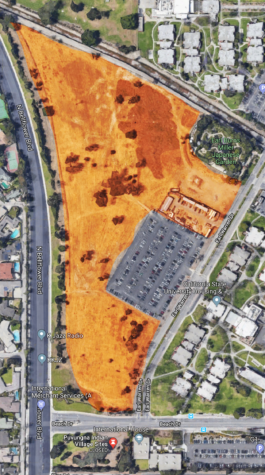
During construction of the Parkside North Dormitory in late 2019, CSULB had dumped dirt on Puvungna, which once spanned over 500 acres and remains just a 22-acre plot of land. Puvungna is listed on both the National Register of Historic Places and the Native American Heritage Commission Inventory of Sacred Lands.
According to information provided by the Indigenous community, CSULB was aware of the legal requirements that were needed to proceed with the dumping of any construction-related dirt. Despite objections from the community and a lack of proper land review under the California Environmental Quality Act, the university chose to move forward with these actions, they said.
“At that time, keeping soil from campus here on site was the preferable method of managing excavated earth based on counsel we received from our campus Committee on Native American Burial Remains and Cultural Patrimony. Native American site monitors and an archaeologist were present during this work,” President Jane Close Conoley said in a video statement Wednesday. “Any minimal construction debris inadvertently included in the relocated soil was incidental and was removed.”
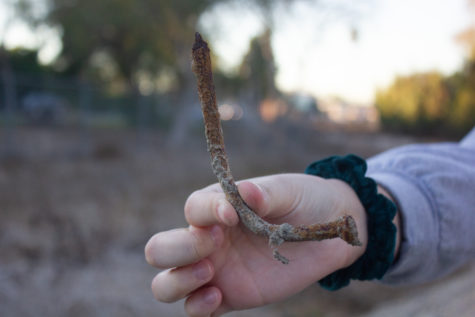
The Native community claimed that the university had plans to build a parking lot on Puvungna, which had been mentioned in their petition to save the land among other social media posts and protests.
Conoley maintained that “rumors and misinformation intensified” during the fall regarding the university’s actions and confirmed that any plans for a parking lot on the land are “untrue.”
“There are no plans in place for a structure of any kind on that land,” she said. “In fact, as we move further into the process of creating a 10-year physical master plan for our campus, the undeveloped portions of this area of campus will be held in reserve with no building plans noted at all.”
The university officially agreed in November to halt the dumping of dirt, according to Rebecca Robles, Culture Bearer or Elder, which contained construction materials such as wires and trash. Conoley said that “the work ended on Sept. 28, 2019.”
“We started to file an injunction, but the university voluntarily stopped,” Robles said in November. “Our injunction was going to be filed on Friday, and they notified us Thursday that they weren’t going to dump any more soils on the site.”
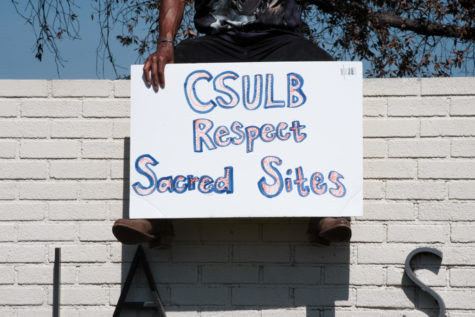
Belardes maintained that although “the main thing was for us to get the dumping stopped,” their goal is to put in place a memorandum of understanding “so these things don’t happen again.”
Conoley discussed the school’s plans for the “undeveloped” land known as Puvungna, stating they “have been engaged in a process with the Native American Heritage Commission, State Historic Preservation Officer and other interested parties to ensure a permanent plan for that soil in terms of better integrating it into the surrounding landscape and introducing new native plantings.”
In’yoni Felix, who is from Acjachemen descent, made a viral TikTok video in November with over 500,000 views that details the struggle over Puvungna, which has led to increased support for the local Indigenous community’s efforts to protect the land.
“Any little dialogue, good or bad…that tends to be a positive to get that conversation going and the topic still relevant,” Belardes said. “Hopefully [students] get an idea of what the campus was before, thousands of years ago. It’s all connected one way or the other, so maybe that brings a little enlightenment to what led to the grounds that they walk on every day, or in the future.”


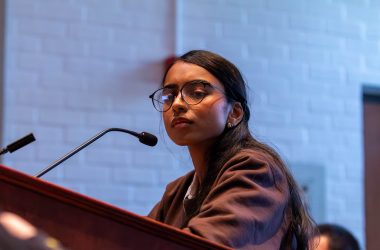

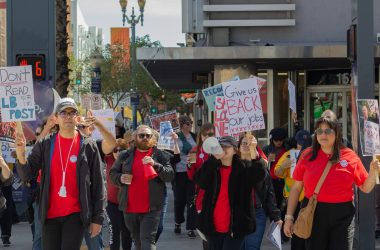
Pingback: The struggle to preserve sacred Puvungna land continues, judge to hear case in June – Signal Tribune